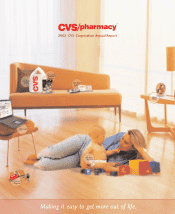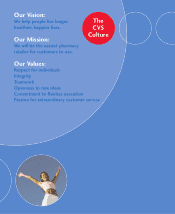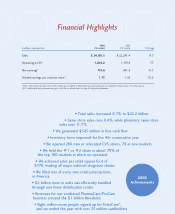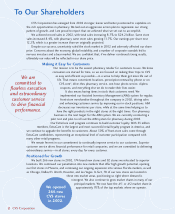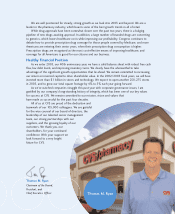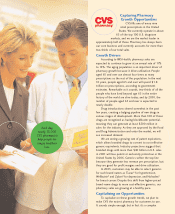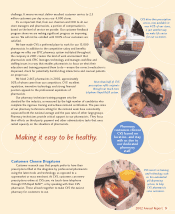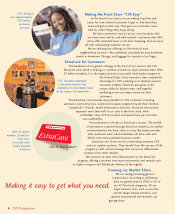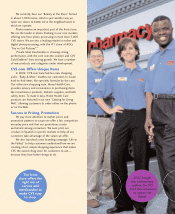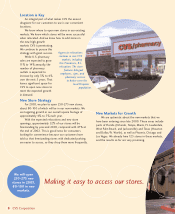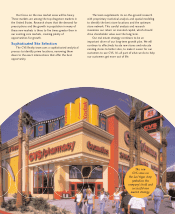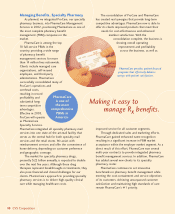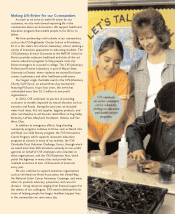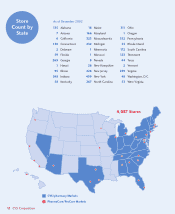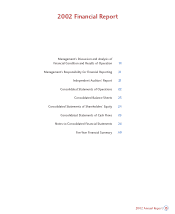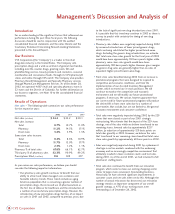CVS 2002 Annual Report Download - page 6
Download and view the complete annual report
Please find page 6 of the 2002 CVS annual report below. You can navigate through the pages in the report by either clicking on the pages listed below, or by using the keyword search tool below to find specific information within the annual report.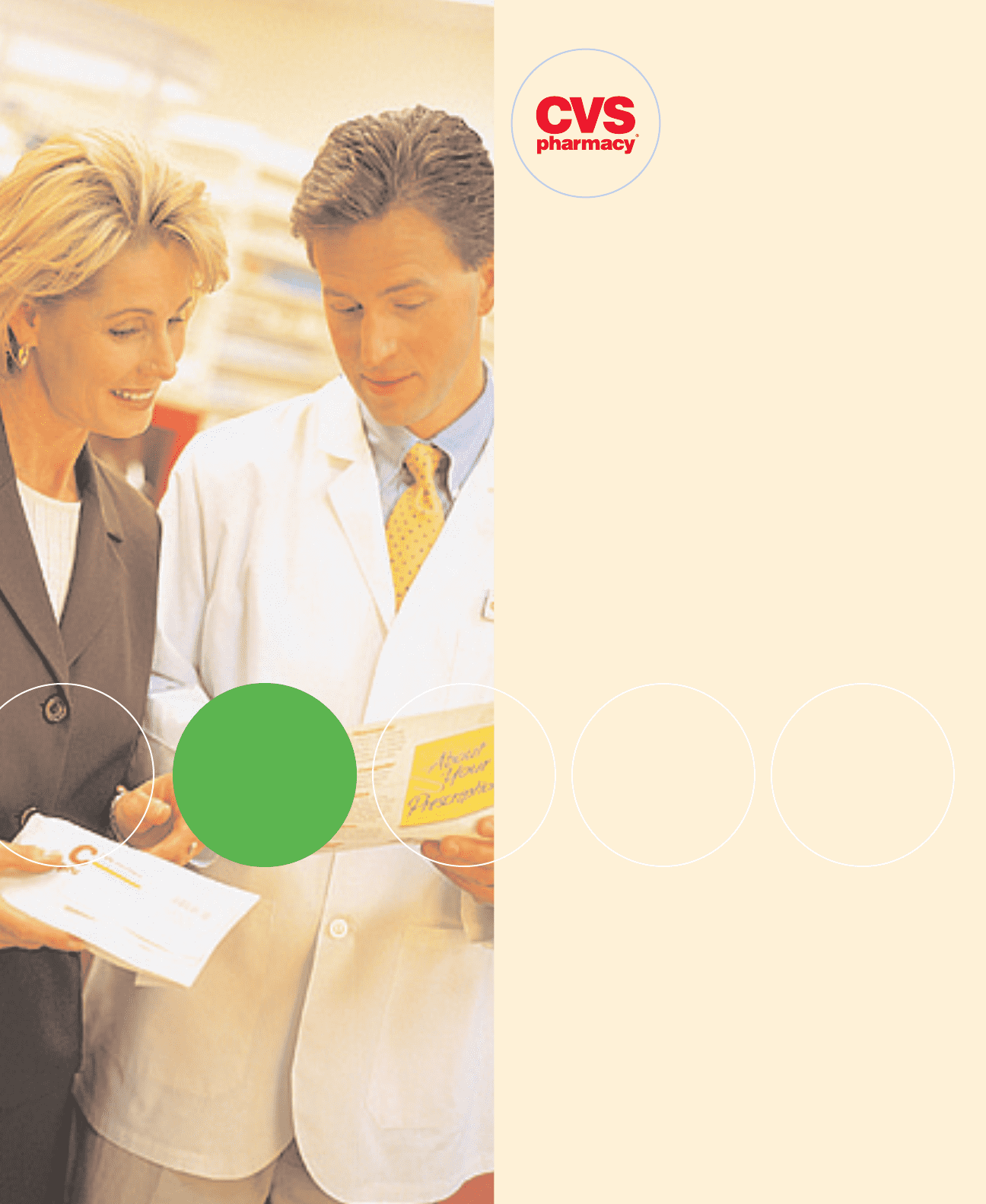
Each day,
nearly 13,000
CVS pharmacists
help people live
longer, healthier
lives.
Capturing Pharmacy
Growth Opportunities
CVS fills one of every nine
retail prescriptions in the United
States. We currently operate in about
65 of the top 100 U.S. drugstore
markets, and we are the market leader in
approximately half of those. Pharmacy has always been
our core business and currently accounts for more than
two-thirds of our total sales.
Growth Drivers
According to IMS Health, pharmacy sales are
expected to continue to grow at an annual rate of 11%
to 14%. The aging population is an important driver of
pharmacy growth because it drives utilization. People
aged 65 and over use almost four times as many
prescriptions as the rest of the population. In the next
10 years, people aged 65 and over will spend $1.8
trillion on prescriptions, according to government
estimates. Remarkable as it sounds, two-thirds of all the
people who have lived beyond age 65 in the entire
history of the world are alive today; and by 2030, the
number of people aged 65 and over is expected to
nearly double.
Drug introductions slowed somewhat in the past
few years, creating a bulging pipeline of new drugs in
various stages of development. More than 100 of those
drugs are recognized as having blockbluster potential,
meaning they can generate at least $500 million in
sales for the industry. As they are approved by the Food
and Drug Administration and enter the market, we will
see increased demand.
We are seeing a growing rate of patent expirations,
which allows branded drugs to convert to cost-effective
generic equivalents. Industry projections suggest that
branded drugs with more than $40 billion in U.S. sales
in 2001 will lose patent or exclusivity protection in the
United States by 2006. Generics soften the top line
because they generate less revenue per prescription, but
they are good for profit margins and drive utilization.
In 2003, customers may be able to select generics
for such brand names as Tiazac®for hypertension,
Wellbutrin®and Zyban®for depression, and Nolvadex®
for breast cancer. Despite this shift from higher-priced
brand-name drugs to more cost-effective generics, our
pharmacy sales are growing at a healthy pace.
Capitalizing on Opportunities
To capitalize on these growth trends, we plan to
make CVS the easiest pharmacy for customers to use.
It sounds simple enough, but in fact it’s a complex

